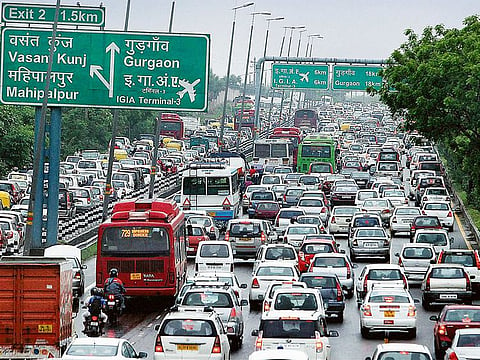Rage, rash driving and lost lives on India’s roads
A person dies every three minutes on the roads, making it a public health concern

Picture this. A speeding police van crashes into a car, kills a six-year-old girl and injures five others but the occupants — police personnel, the ones who are there to protect us — flee from the accident site. The little girl may have been alive today if they had done their duty and helped with emergency services by rushing her to the hospital. Incidentally, the police vehicle was driving on the wrong side of the road.
Or this. A young woman is feeding stray dogs when a jeep hurtles into her and carries on. The driver does not stop, and the girl is left sprawled on the road with head injuries. The man behind the wheel was a retired Indian army major.
India’s roads are a dichotomy. While on the one hand, multi-laned highways with upgraded infrastructure under Nitin Gadkari have been a game changer, on the other, stepping out even to the neighbourhood grocery store is no guarantee that you will make it back home. India recently observed Road Safety Week, where the focus was on creating public awareness, but that pitch is falling short. The days and weeks leading up to it were mired in road rage headlines fused with hit-and-run accidents.
Crimes on the roads
A 38-year-old man riding pillion on a motorcycle was beaten to death after an altercation with another biker over giving way; in another incident, a man driving a sedan ran over three people after his car allegedly hit a biker and the locals tried to bring the situation under control by restraining him.
Why don’t these crimes get the kind of attention they deserve? What is unfolding on the streets needs urgent redressal. Public memory is short, empathy is in shorter supply and much like reports of crimes against women these incidents don’t have the staying power that allows for change. The lost lives on India’s roads lack the sensationalism that keeps a headline churning.
But every casualty on the road is one too many. Three years ago, the government amended the Motor Vehicles Act, making penalties harsher for violations while acquiring a driving licence was made (ostensibly) tougher. These steps have hardly been a deterrent; in 2021, the number of road rage and rash driving cases increased to 2.15 lakh.
It is almost a free for all. In one of the most horrific incidents late last year, a young man was battered to death after an altercation between two groups over car parking. It got so volatile that a man picked up a brick lying on the side of the road and repeatedly smashed the victim’s head, who was brought dead to the hospital.
The transition to an aggressive, impatient society is most noticeable on the country’s roads, where pent-up fury finds an outlet and rationality is thrown to the winds. What doesn’t contain the republic of anger is the lack of a specific provision under the Motor Vehicles Act to make road rage a punishable offence. Just how long it takes to get justice can be seen from the case of former cricketer-turned-politician Navjot Singh Sidhu who in 1988 was accused of beating an elderly man to death and fleeing in a case of road rage. It was only in 2022 — 34 years later — that he was punished with a year’s rigorous punishment. Sidhu had earlier been let off with a paltry fine of one thousand rupees.
A 2021 World Bank report says India has one of the highest road accident deaths globally. With only 1 per cent of vehicles, the outcome is dangerous and far out of proportion with the country accounting for 10 per cent of crash-related deaths. The majority burden falls on victims belonging to the low-income group who do not have access to a social safety net. The data by National Crime Records Bureau also shows an increasing graph, reporting a four per cent increase in fatalities on the road.
Poor roads and poorer driving
More than 5,000 people died in pothole-related road deaths in two years, so the blame on speeding doesn’t account for poorly planned roads in a country where zebra crossings as a concept still don’t exist. In the absence of last-mile connectivity, pedestrians are forced to take risks when the traffic isn’t given a break. Indian roads have never been pedestrian-friendly, and a different conversation needs to begin urgently.
Then there are the usual suspects: drunk driving, which tests the corruption meter; lack of respect for speed limits; and a refusal to give right of way. Unfortunately, it is not just about education.
Every three minutes, an Indian dies on the roads and experts say it is a public health concern. Lying in a hospital bed in a coma since she was hit by a car on New Year’s Eve, Sweety Kumari, a student, is fighting to avoid becoming just another statistic. But as I write this, there is news of a 71-year-old man being dragged mercilessly on a Bengaluru road by a scooter-borne man who crashed the senior citizen’s car. Is anyone watching?
Sign up for the Daily Briefing
Get the latest news and updates straight to your inbox




